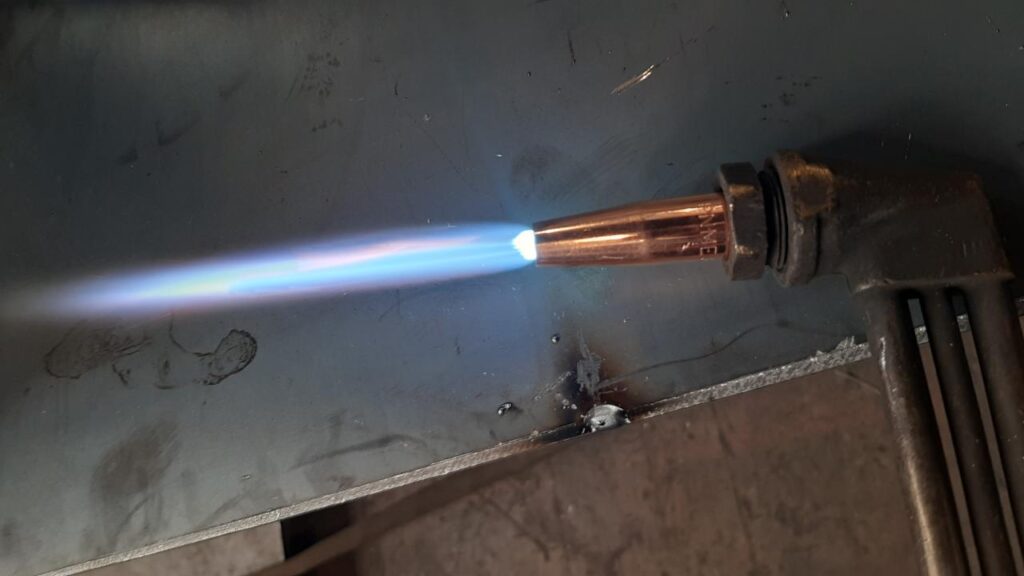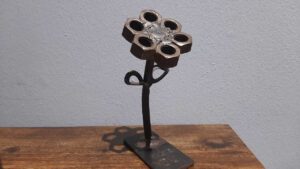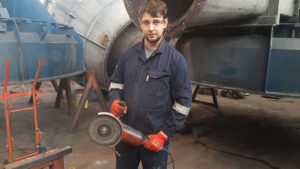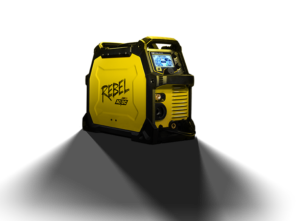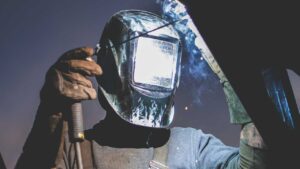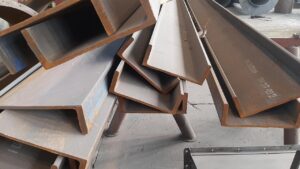What is oxy-fueled cutting used for
Oxy-fueled cutting is mainly used for cutting carbon steel. It is the cheapest way for cutting any shape or profile of carbon steel. It is also the least accurate way for cutting steel and is limited to cutting steel with less than or equal to 0.6% carbon content.
You can check out how to use and set up a cutting torch and how to cut circles, straights and bevels with a cutting torch if you are interested in learning a lot more about cutting torches and their function in the metal industry.
Metals you can cut using oxy-fuel
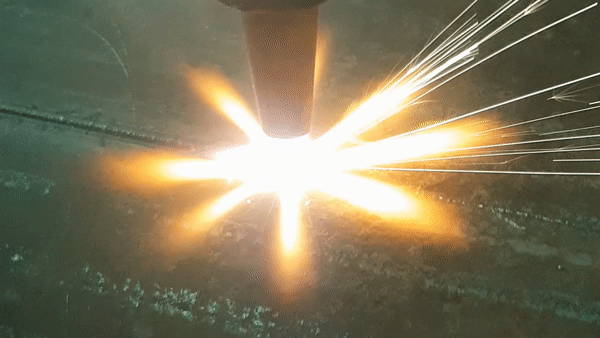
The only steel that can be cut is carbon steel/mild steel ranging from low (<0.3% carbon) to medium (0.3 to 0.6% carbon) carbon steel.
- Low carbon steel
- Mild steel
- Medium carbon steel
- Hardened low carbon steel
- Iron
- Titanium
Looking for an alternative to cutting metal with an oxy-fuel torch. Consider using a grinder, I did a full article on the safe use of an angle grinder that you can check out now and how to cut different metal profiles.
Metals you can’t cut using oxy-fueled cutting
Any metal that is corrosion-resistant because of how the oxy-fueled cutting process works. It oxidizes the metal that is heated then blows the oxidized metal away with the pure oxygen making a cut. In simple terms, if the metal can’t oxidize (form rust) then it can’t be cut using oxy-fueled cutting.
- Stainless steel
- Aluminum
- Copper
- High carbon steel
- Cast iron
Different oxy-fueled cutting nozzles
acetylene nozzle ANM
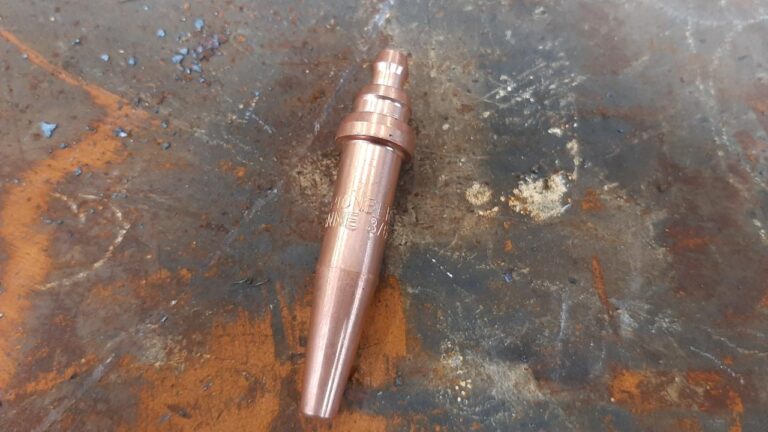
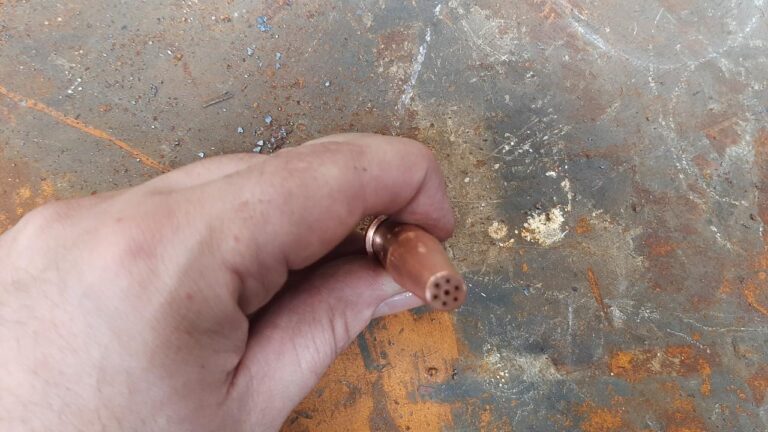
This cutting nozzle is use with acetylene gas. It is a single piece that consists of a single hole in the middle with 6 smaller holes surrounding it. The main hole’s size in the middle determines the size of the nozzle. If the diameter of the hole is 0.8mm then the nozzle size is 0.8 or 1/32 and so on.
Propane(LPG) nozzle PNM
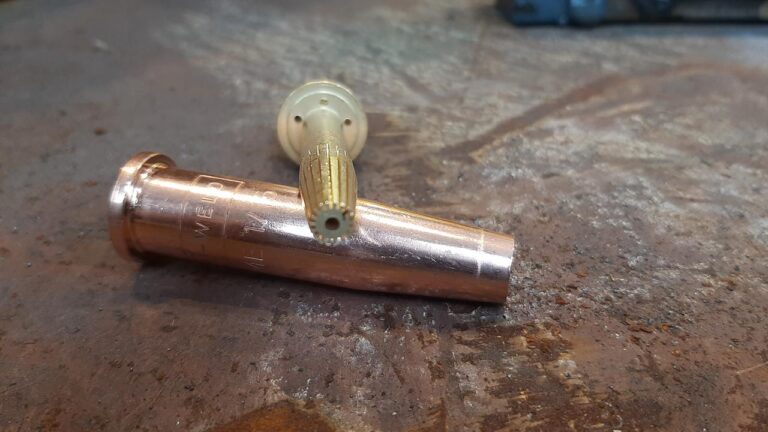
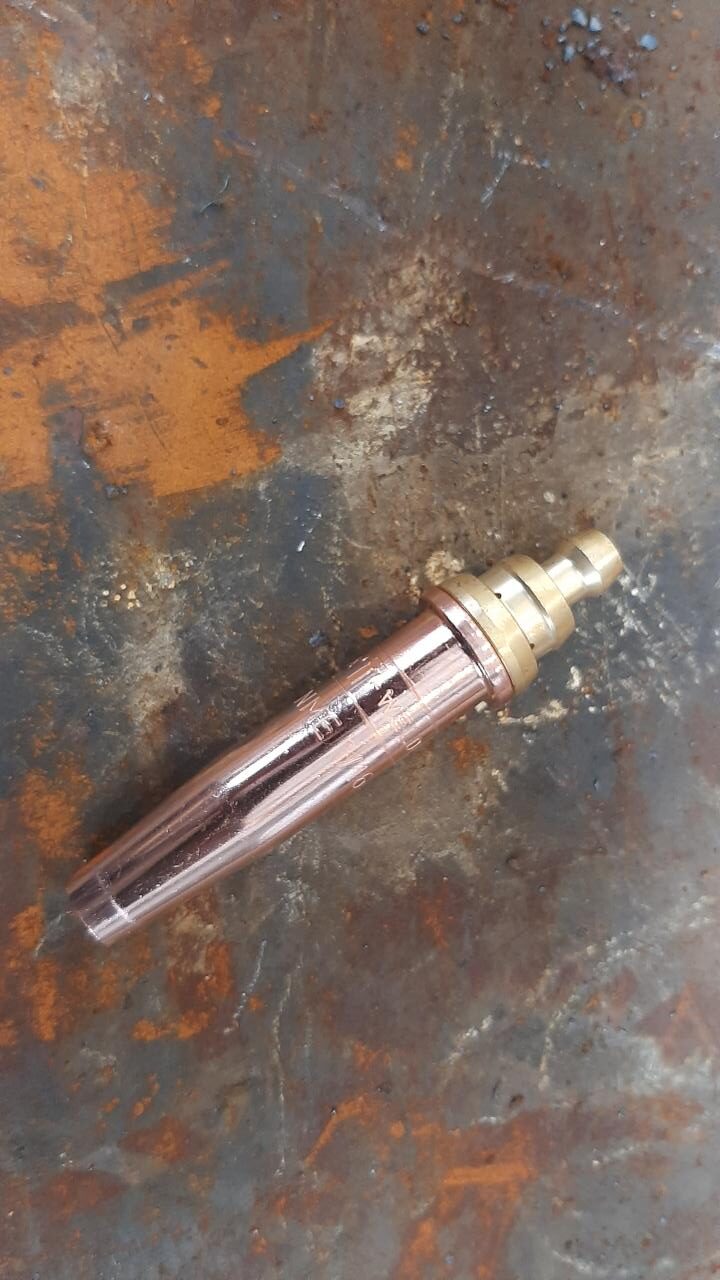
This cutting nozzle consists of two parts with a brass interior and a copper cover. The interior part has a hole in the middle that determines the size, similar to the acetylene nozzle, which is surrounded by multiple grooves. The number of grooves depends on the size of the nozzle and the make.
Gouge nozzle
This type of nozzle is very rare and you most likely won’t need it. You get a nozzle for propane(LPG) and acetylene gases that work similar to the cutting nozzles, but they have a slight bend in them with very large middle holes. These types of nozzles are used for gouging.
What is gouging
Gouging is the act of melting metal and blowing it away. It is used to remove a lot of metal from over metals. For example, you can use it to remove thick welds or to separate welded pieces from each over
Different steel carbon contents
- Cast iron carbon content 2-4%
- High/medium carbon steel 0.3-1%
- Low carbon steel/mild steel less than 0.3%
- Stainless steel is less than 1.2%
Why can’t you cut cast iron using oxy-fuel cutting
Cast iron’s carbon content makes it very resistant to oxidation. If a metal can’t oxidize then you can use oxy-fuel cutting to cut it.
Why can’t you cut stainless steel using oxy-fuel cutting
Oxy-fuel torch will never cut stainless steel because it is very resistant to oxidation(rust). Also, the chromium in stainless steel has a higher melting point than iron. This causes a protective layer to form over the iron to prevent it from oxidizing when the steel is melted.

